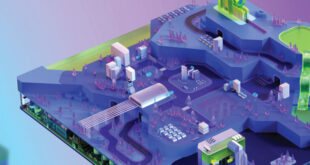Radial-G is the first title to be produced by Tammeka Games, a new team with decades of experience across multi-award winning titles as well as serious and simulation games.
For its debut, the studio opted to create a sci-fi racer optimised for Oculus Rift. While plenty of engines support the pioneering device, there was no question which one Tammeka would choose.
“We had been using Unity for many years so we already had a strong in-house knowledge of the capabilities of the engine,” says game producer Sam Watts.
“When the Oculus Rift DK1 headset was released, we jumped onboard immediately as we knew we could create something special. Unity allows us to quickly implement VR support into existing and new projects whilst easily testing out ideas and prototypes, determining what works, and what doesn’t.”
The team used and adapted existing Unity tools to create the game’s sci-fi world and pipe-shaped tracks.
“Through the engine we were able to nail the essence of the game down and build upon the environment through testing the effects on motion sickness and so on, without having a lengthy build time slowing down development,” says Watts.
“The single, drop-in SDK element of the Oculus VR support for Unity meant we were up and running in a short amount of time, allowing us to concentrate on the important design decisions and
programming tasks.”
Given the fast-pace of Radial-G’s racing, motion sickness was a major concern for Tammeka Games. Watts says the team spent a lot of time identifying every way to counteract this, whether it was within the game mechanics, the design of the world or the virtual reality display.
For example, the studio has restricted rapid changes in acceleration. While there are speed boosts and slow-down gates, the actual difference in speed isn’t huge.
To date, we’ve seen over 2,000 players – only 30 or so had to stop after the first 20 seconds, after which the body accepts VR.
Sam Watts, Tammeka Games
Radial-G has also been designed to be played in a sitting position, as if in a cockpit, providing “a natural connection between brain and senses”. The fact that the player’s ship is constantly connected to the pipe-shaped tracks makes the experience feel more stable and provides a natural limit to player/camera movement – they can look around but only within the confines of their cockpit.
Watts says an element of disconnect also helps: “Using a futuristic environment helps the brain determine the difference between the game and the real world. It allows the brain to switch off and have fun.
“We’ve carried out extensive playtest sessions with as many different types of user as possible to measure responses, ability, ease-of-use and any sensations of sickness brought on through play. To date, we’ve seen over 2,000 players – only 30 or so had to stop after the first 20 seconds, after which the body accepts VR.”
The rapid prototyping that Unity allows was a significant contributor to the number of tests Tammeka was able to organise.
Watts concludes: “The ease that Oculus SDK integrates with the Unity engine makes development a breeze for us.”

 MCV/DEVELOP News, events, research and jobs from the games industry
MCV/DEVELOP News, events, research and jobs from the games industry



